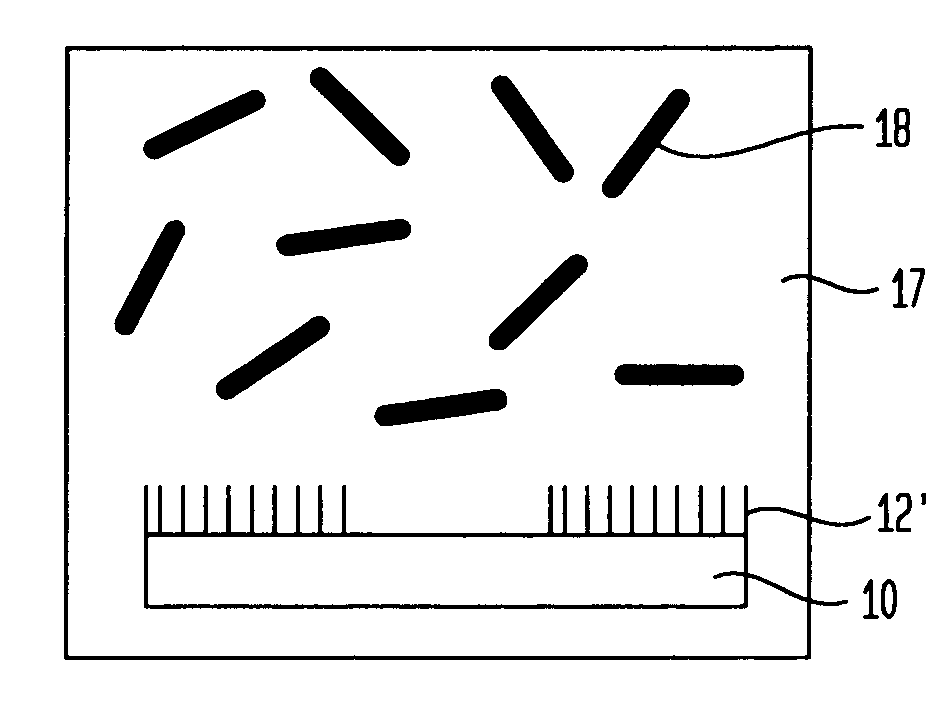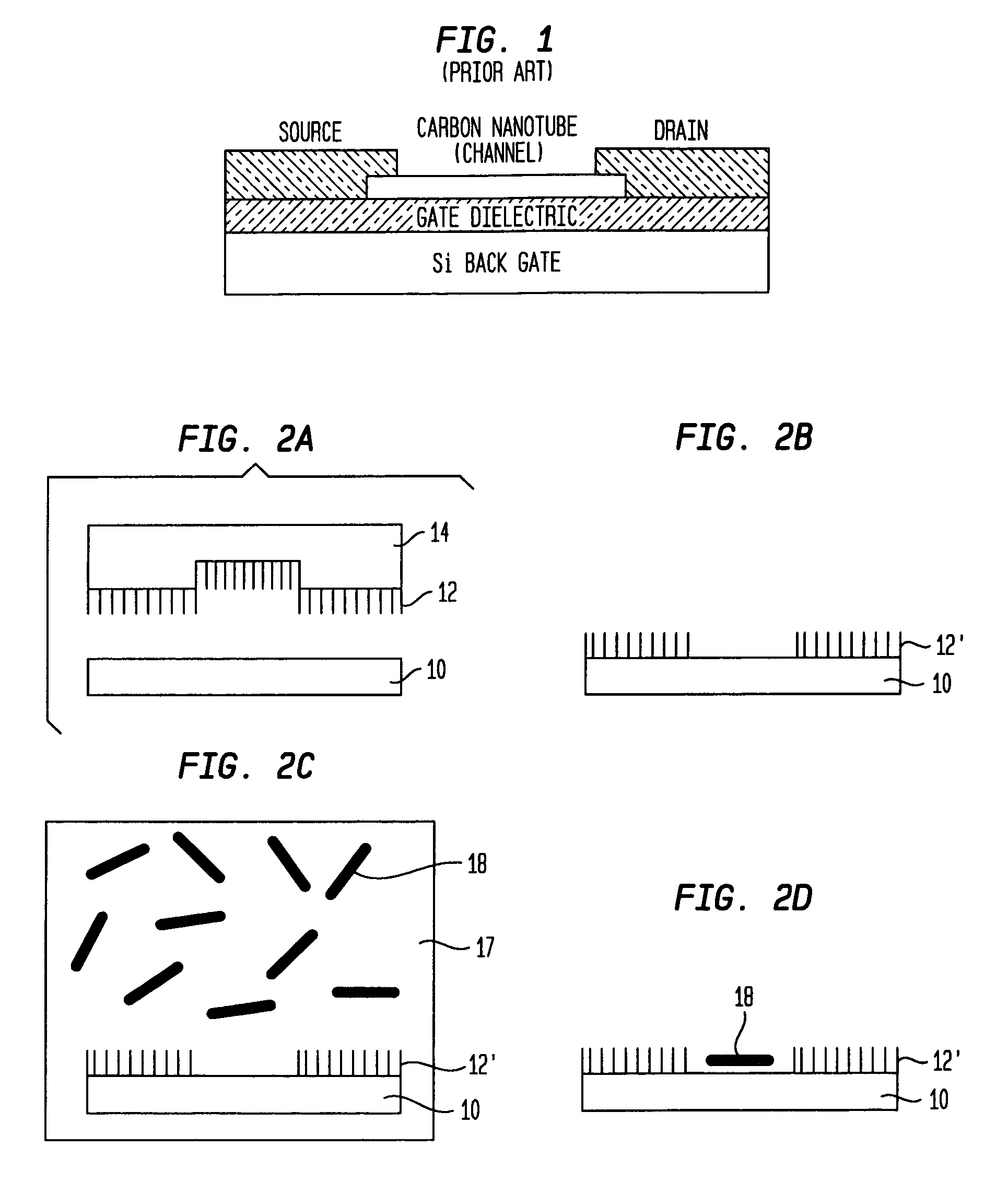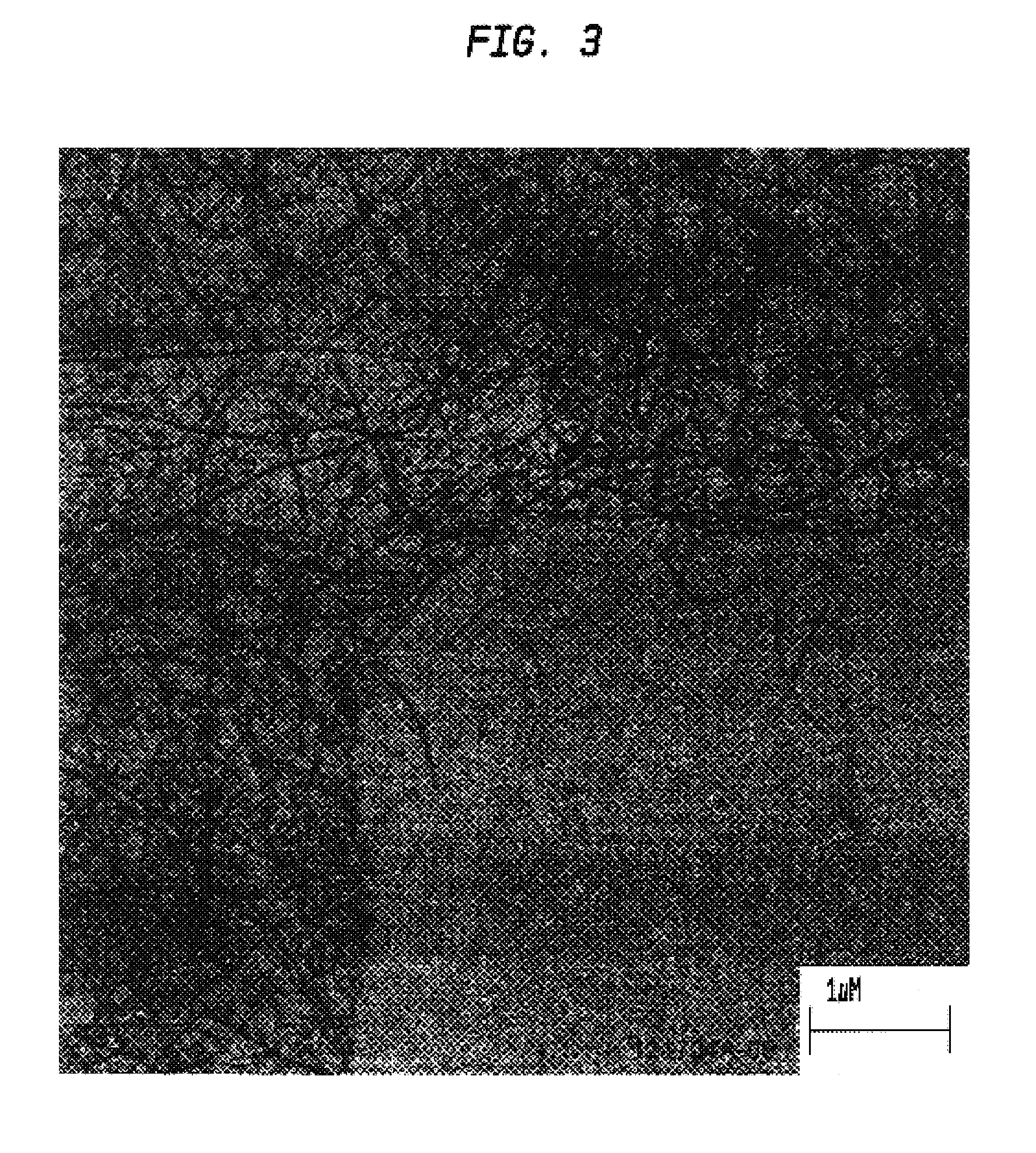Selective placement of carbon nanotubes on oxide surfaces
a carbon nanotube and oxide surface technology, applied in the field of selective placement of carbon nanotubes on a particular surface, can solve the problems that apts cannot be printed using conventional poly(, dimethylsiloxane) (pdms) stamps, and the polymerization of trialkoxysilane undergoes in solution and self-assembly must be carried out under control
- Summary
- Abstract
- Description
- Claims
- Application Information
AI Technical Summary
Benefits of technology
Problems solved by technology
Method used
Image
Examples
example 1
[0045]A silicon wafer was coated with 100 nm of hafnium oxide by vacuum evaporation. A poly(dimethoxysilane) (PDMS) stamp with prepatterned features (indentations) was soaked with a 5 mM solution of hexadecylphosphonic acid in isopropyl alcohol and dried with stream of nitrogen. The PDMS stamp was then pressed against the substrate with hafnium oxide surface and held for few seconds, and then heated at 100° C. for one minute. The stamped substrate was then coated with a dispersion of carbon nanotubes in dichloroethylene and dried under stream of nitrogen. The substrate was then immersed in dichloroethylene and agitated mildly to remove any carbon nanotubes on the stamped area. This process lead to deposition of carbon nanotubes only on area of the substrate which was not stamped (exposed hafnium oxide surface) as shown in FIG. 3. No nanotube formation was observed in the stamped area.
example 2
[0046]A silicon wafer with 100 nm of silicon oxide on the surface was patterned with 10 nm of aluminum oxide by evaporation through a shadow mask. The substrate was then immersed in a 5 mM solution of hexadecylphosphonic acid in ethanol. After 2 hours, the substrate was removed from the solution and washed with ethanol and dried at 100° C. for one minute. A dispersion of carbon nanotubes in dichloroethylene was deposited on the substrate and dried under stream of nitrogen. The substrate was then washed with the solvent and dried at room temperature. In this example, carbon nanotubes were deposited on exposed silicon dioxide surface as shown in FIG. 5. In this example, the carbon nanotubes adhered to the cleaned SiO2 surface and not to the treated Al2O3.
example 3
[0047]A silicon wafer with 100 nm of silicon oxide on the surface was patterned, via standard lithography, with a 9 nm aluminum layer. The aluminum layer was then oxidized in an oxygen plasma. The sample was placed in a dilute (4 mM in methanol) 4-aminobutylphosphonic acid (ABPA) solution for several days. The ABPA binds only to the Al2O3 and not to the SiO2. The sample was then placed in a suspension of carbon nanotubes in surfactant Triton-X and water for 4 hours. The substrate was removed from the solution and washed with excess solvent. Examination of the substrate shows that carbon nanotubes were found mainly on the areas where ABPA binds, that is, on the Al2O3 patterned lines (FIG. 7). The surrounding SiO2 showed a very low density of carbon nanotubes or amorphous carbon.
PUM
| Property | Measurement | Unit |
|---|---|---|
| thick | aaaaa | aaaaa |
| length | aaaaa | aaaaa |
| length | aaaaa | aaaaa |
Abstract
Description
Claims
Application Information
 Login to View More
Login to View More - R&D
- Intellectual Property
- Life Sciences
- Materials
- Tech Scout
- Unparalleled Data Quality
- Higher Quality Content
- 60% Fewer Hallucinations
Browse by: Latest US Patents, China's latest patents, Technical Efficacy Thesaurus, Application Domain, Technology Topic, Popular Technical Reports.
© 2025 PatSnap. All rights reserved.Legal|Privacy policy|Modern Slavery Act Transparency Statement|Sitemap|About US| Contact US: help@patsnap.com



